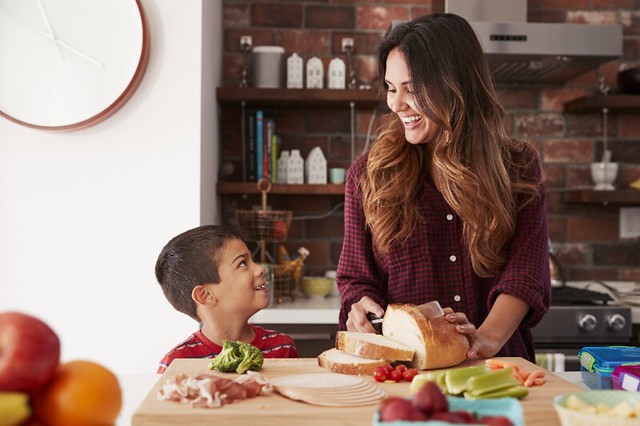
With the 2020-2021 school year approaching, many parents are preparing for changes to their routine. Many students may be returning to school for the first time since the COVID-19 pandemic began and others may be distance learning. Don’t let foodborne illness – commonly called food poisoning – keep your child from learning. Take the time to plan and prepare your children’s lunch meals safely.
While children rely on teachers for daily lessons, the task of making safe lunches falls squarely on caregivers. Unlike cafeteria workers who take food safety trainings on a regular basis, most parents preparing lunch for their kids at home, or to take to school, haven’t received any formal food safety instruction. Nutrition counts, too. The lunch you’re making not only satisfies hunger pangs of busy kids, it fuels their cognitive abilities. Studies have shown that proper nutrition improves students’ scores, memory capacities, motor skills, social skills, and language skills. Keep them well fed and safe with the four steps to steps to food safety – Clean, Separate, Cook and Chill.
Clean: The best way to prevent many forms of illness, including foodborne illness, is with proper hand washing. Children should always clean their hands before eating, and parents should do so before and during lunch preparation. It’s easy to get preoccupied by busy schedules and rush through the five steps of washing hands; however, handwashing is vital to remove any germs that may be present. Hand washing should always include the following:
- Wet your hands with clean, running water (warm or cold), turn off the tap and apply soap.
- Lather your hands by rubbing them together with the soap. Be sure to lather the backs of your hands, between your fingers and under your nails.
- Scrub your hands for at least 20 seconds. Need a timer? Hum the “Happy Birthday” song from beginning to end twice.
- Rinse your hands well under clean, running water.
- Dry your hands using a clean towel.
Separate: Prevent cross-contamination by keeping raw meat and poultry away from ready-to-eat foods. When preparing perishable foods that require cutting (for example, raw bacon and raw chicken you plan to cook for salad), make sure you separate these items from fruits, vegetables, cheeses and other foods to avoid cross-contamination.
- Cut up and prepare your raw ingredients ahead of time to avoid cross-contamination as you handle your ready-to-eat items for salads or other sides.
- Different colored cutting boards are a great reminder to prevent cross-contamination (you can use a green cutting board for fresh produce and another color for meat and poultry).
Cook: Have a food thermometer easily accessible to ensure you’re cooking to recommended safe internal temperatures:
- Cook whole cuts of meat, including beef and pork to 145 degrees Fahrenheit and allow them to rest for at least 3 minutes before carving.
- Cook ground meats, like burgers and sausages, to 160 degrees Fahrenheit.
- Cook all chicken and turkey to 165 degrees Fahrenheit.
Chill: When preparing lunch ahead of time, remember perishable foods should not enter the Danger Zone – temperatures between 40 and 140 degrees Fahrenheit – where bacteria multiply quickly and can make food unsafe.
- Make sure all perishable items are refrigerated within two hours of coming out of the oven or refrigerator.
- Discard food that has been left out for more than two hours to prevent foodborne illness.
- If your child needs to carry their lunch themselves, never pack perishable foods in a brown paper bag because they will be unsafe by lunchtime. Use an insulated, soft-sided lunch bag and add a frozen gel pack and a frozen juice box or bottle of water with the lunch.
These four steps – Clean, Separate, Cook and Chill – give parents and caregivers steps they can use to protect their children from food poisoning. Now that we’ve covered all the basics, you’re ready for the big test – hungry students!
Consumers can learn more about key food safety practices at Foodsafety.gov, by following @USDAFoodSafety on Twitter and by liking Facebook.com/FoodSafety.gov. Consumers with questions about food safety can call the USDA Meat and Poultry Hotline at 1-888-MPHotline (1-888-674-6854) from 10 a.m. to 6 p.m. Eastern Time, Monday through Friday, in English or Spanish, or email to mphotline@usda.gov. Consumers can also chat live at ask.usda.gov.
If you have questions about storage times for food or beverages, download USDA’s FoodKeeper application for Android and iOS devices.
